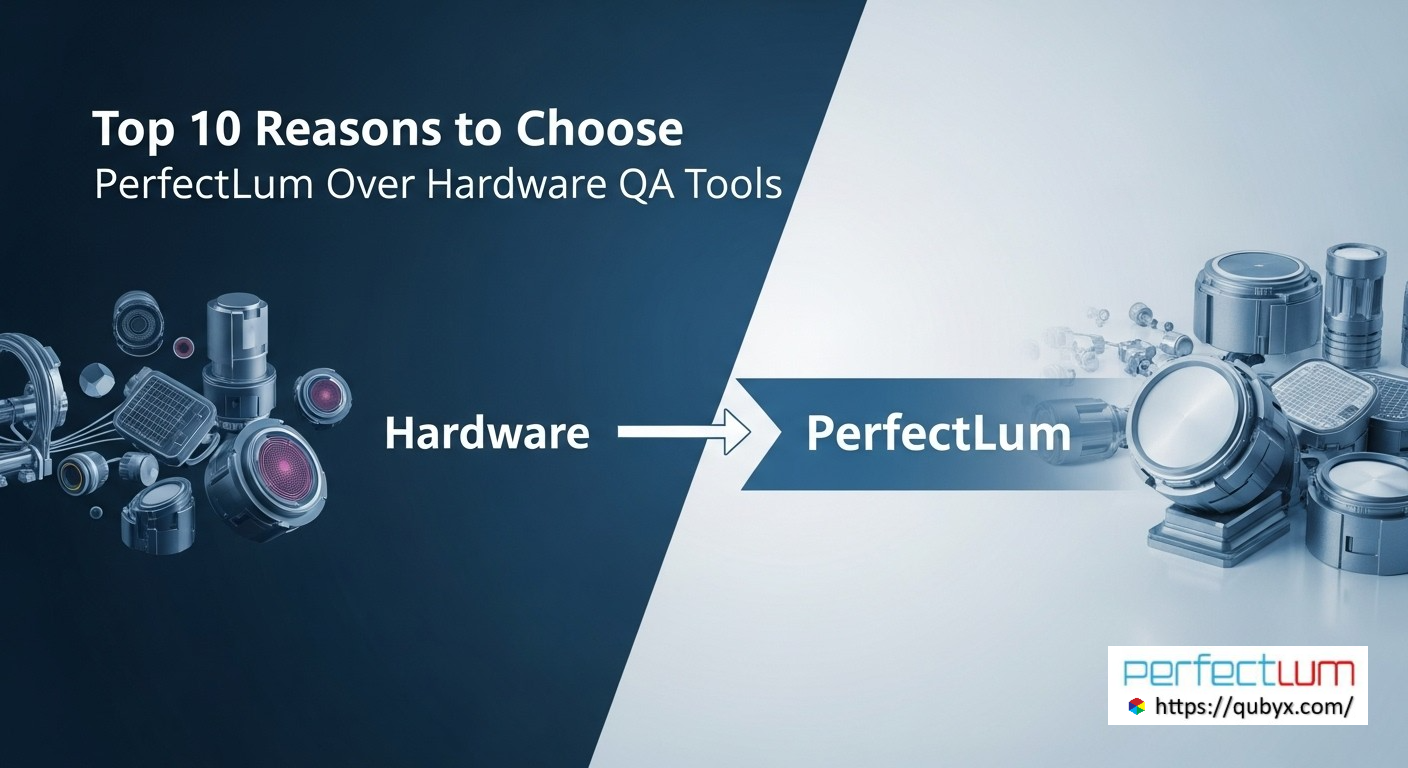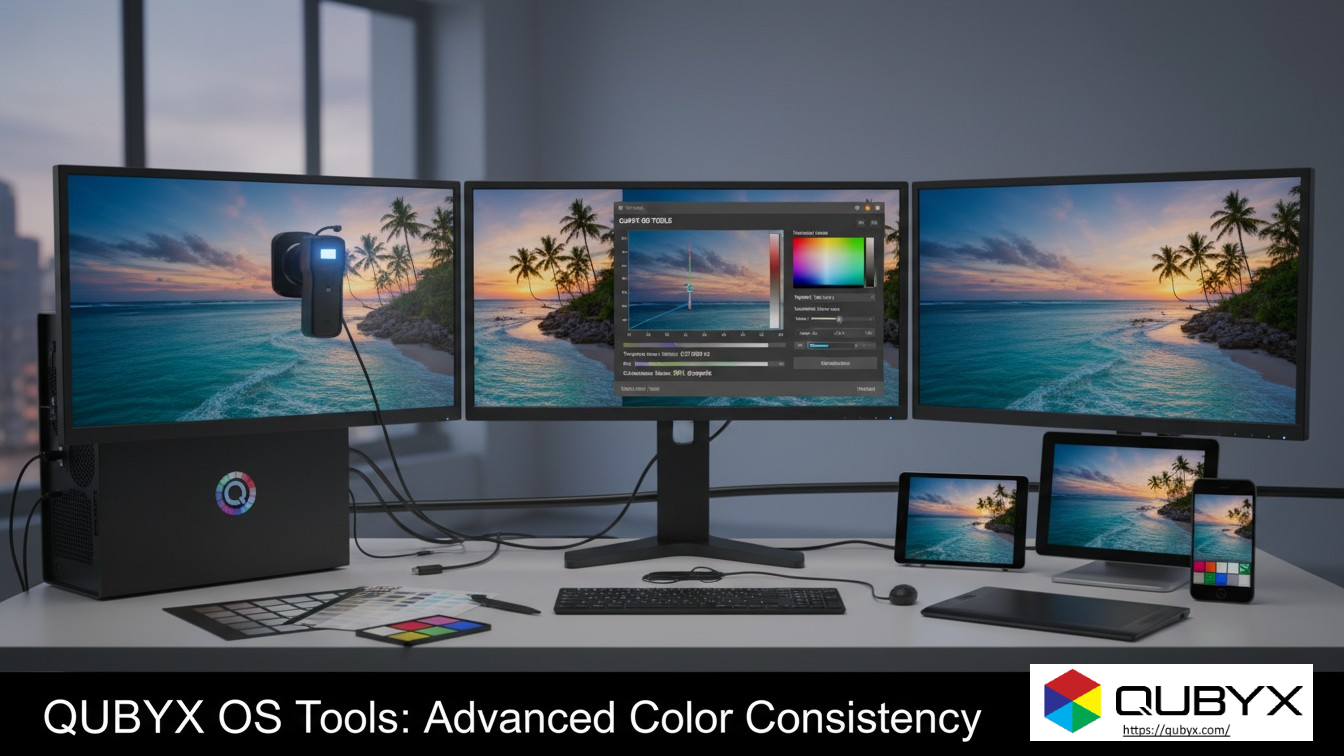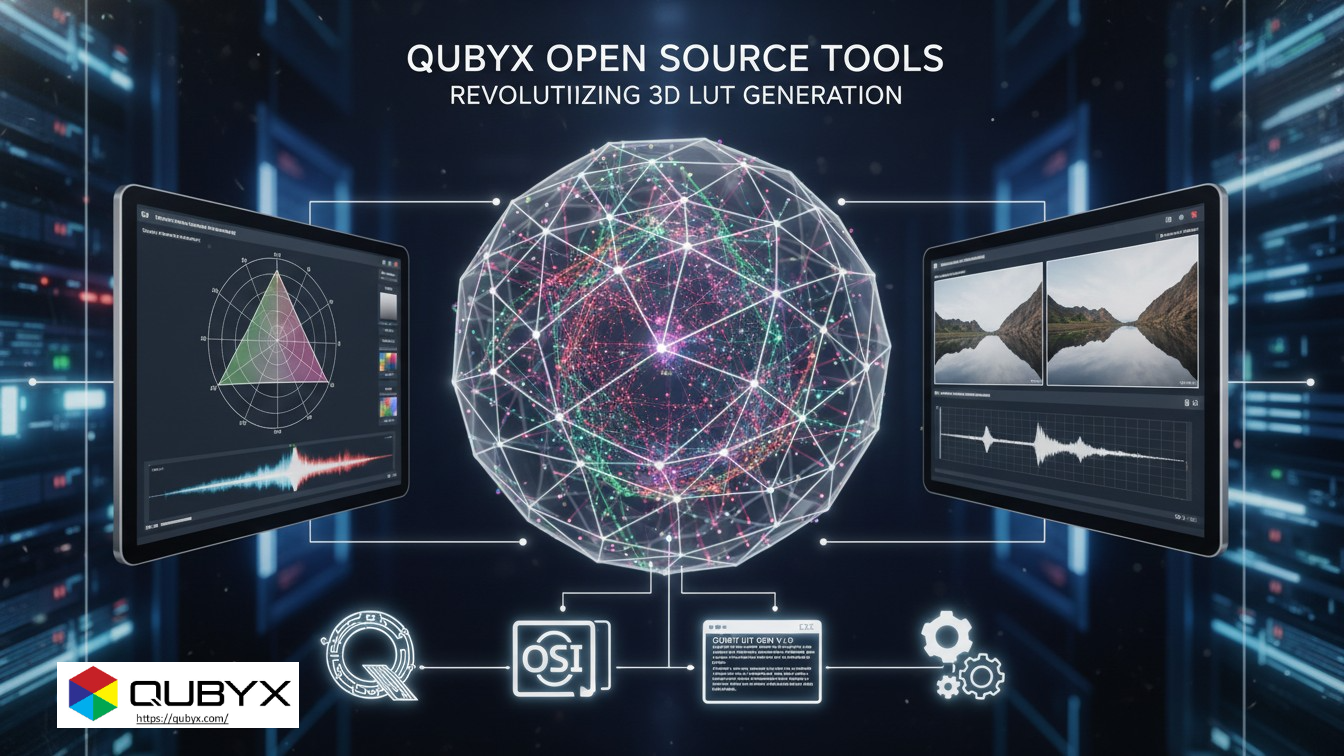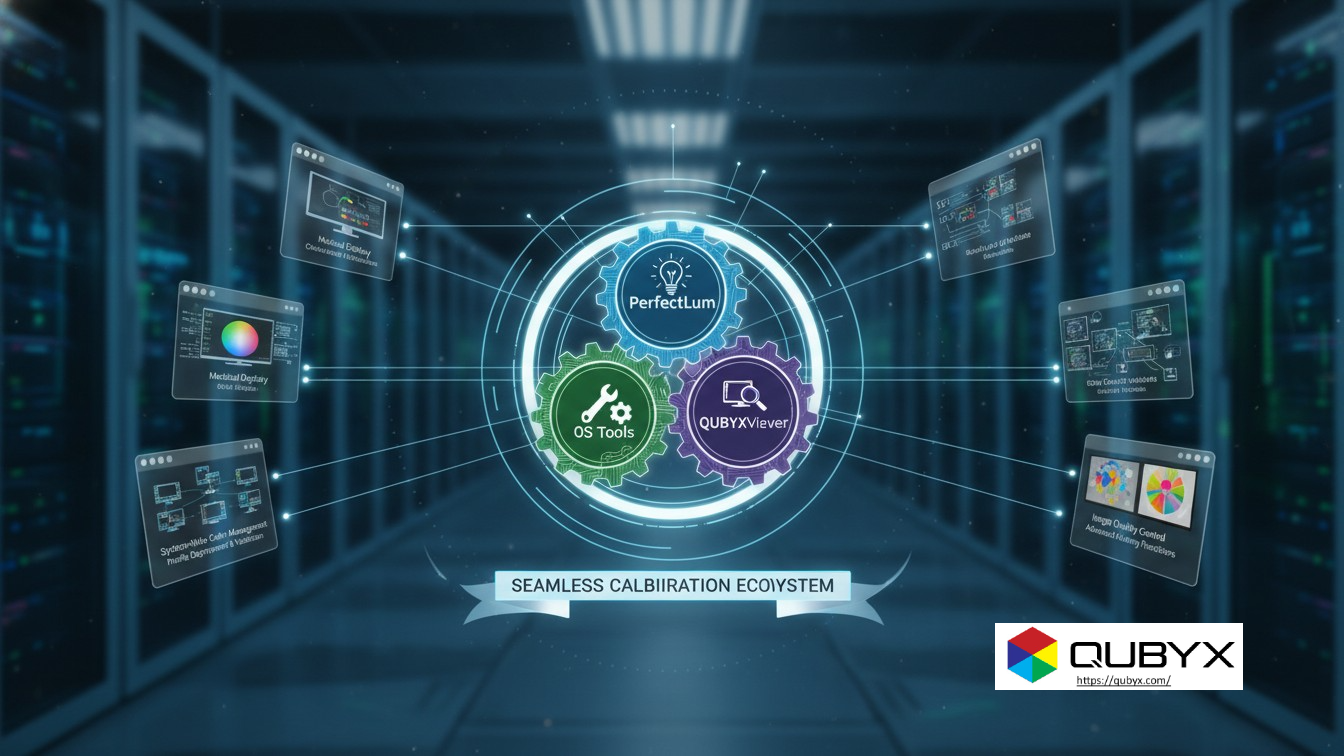News
- Home
- Top 10 Reasons To Choose PerfectLum Over Hardware QA Tools

Top 10 Reasons To Choose PerfectLum Over Hardware QA Tools
- October 23, 2025
- Shamsul
Top 10 Reasons to Choose PerfectLum Over Hardware QA Solutions
Executive Summary
Hardware-first QA looks safe—but it’s siloed, slow, and expensive. PerfectLum delivers a software-first calibration and QA workflow that meets clinical standards (e.g., DICOM GSDF) while cutting cost and complexity across mixed monitor fleets. Below are 10 decisive reasons teams switch from hardware-centric QA (dedicated probes, LUT boxes, vendor-locked kits) to PerfectLum.
1) Lower Total Cost of Ownership (TCO)
Hardware QA stacks require meters, LUT boxes, proprietary kits, and per-model accessories—plus annual replacements and shipping/downtime costs. PerfectLum replaces most of that with software-only calibration and QA automation:
-
Fewer devices to buy, ship, maintain, and insure
-
No vendor-locked “per-monitor” dongles for basic compliance
-
Fleet-wide licensing models that scale with your environment
Result: Typical hospitals report 30–60% lower QA spend year-over-year when they transition routine calibration and conformance checks to PerfectLum.
2) Fast, Standards-Aligned Calibration (DICOM GSDF)
PerfectLum implements DICOM Part 14 (GSDF) gray-scale conformance with tight tolerances and reproducible results. It guides staff through acceptance testing and routine QA patterns consistent with AAPM TG18/TG270, DIN 6868-157, and IEC 62563-1.
Benefit: Faster time-to-compliance on day one, with scheduled re-tests you don’t have to babysit.
3) Vendor-Neutral & Future-Proof
Hardware QA ecosystems often lock you to one brand or a small set of panels. PerfectLum is vendor-neutral, so you can:
-
Mix and match medical-grade and commercial-grade displays where clinically appropriate
-
Extend the life of existing assets without switching ecosystems
-
Add new models without waiting for hardware support packs
Outcome: Procurement freedom and better negotiation leverage with monitor suppliers.
4) Centralized Fleet Management & Remote QA
With hardware, routine checks become a rolling roadshow. PerfectLum centralizes scheduling, calibration tasks, health status, and audit results across your entire fleet:
-
Remote triggers for tests (no technician at the workstation)
-
Dashboards highlighting out-of-tolerance devices before they cause risk
-
Role-based views for physics, QA, and IT
Result: Less time walking, more time improving quality.
5) Rock-Solid Audit Trails & Regulatory Readiness
PerfectLum automatically logs:
-
Date/time, operator, workstation, display, profile used
-
Test results, deviations, corrective actions
-
Versioned history for every device
When auditors ask, you export a defensible report in minutes. That’s hard to do with meter-only workflows scattered across spreadsheets and email attachments.
6) ICC/3D-LUT Workflows Without the Hardware Maze
Historically, cinema-grade color control meant LUT boxes and proprietary chains. PerfectLum supports ICC-based calibration and 3D-LUT workflows (where the GPU/OS stack allows), letting you:
-
Hit DICOM GSDF for grayscale and refined color targets for multi-modal viewing
-
Keep transformations portable and repeatable
-
Avoid the complexity of external LUT hardware for most use cases
Outcome: Reference-grade results with dramatically less kit to deploy and maintain.
7) Less Downtime, More Uptime
Hardware QA days are “no-reading” days. PerfectLum allows off-hours scheduling, quick remedial corrections, and predictive QA (spotting drift trends before they breach tolerance).
Impact: More productive radiologists, fewer escalations, fewer surprise reschedules.
8) Built-In Guidance for Acceptance, Constancy & Luminance Checks
PerfectLum ships with task lists and visual test patterns aligned to DICOM/AAPM/DIN workflows:
-
Acceptance testing at install
-
Constancy tests at routine intervals
-
Luminance response & uniformity verifications
-
Ambient light prompts and documentation
Benefit: New staff ramp faster; policies remain consistent even as teams change.
9) Security & Data Governance Ready (HIPAA/GDPR-Aligned Practices)
PerfectLum supports enterprise controls (e.g., identity, access, logging), on-prem deployment, and least-privilege user roles. QA data stays in your governed environment; no PHI leaves your domain.
Result: Compliance teams say “yes” sooner; audits go smoother.
10) Scales From One Reading Room to the Enterprise
Whether you run a single radiologist home setup or a multi-campus network, PerfectLum scales:
-
Site, department, and enterprise views
-
License models that grow with you
-
Compatible with VDI and hybrid on-site/remote reading scenarios
Outcome: Start small; expand without re-architecting your QA program.
Quick Comparison
| Capability | Hardware-First QA | PerfectLum (Software-First QA) |
|---|---|---|
| Upfront cost | High (meters, LUT boxes, vendor kits) | Low (software license, existing GPU/OS) |
| Ongoing cost | Calibration accessories, shipping, replacements | Predictable software subscription/maintenance |
| Standards (DICOM GSDF, TG18/TG270, DIN) | Possible, but manual and device-specific | Built-in workflows and automated scheduling |
| Fleet management | Fragmented, per-room | Centralized dashboard & remote orchestration |
| Auditability | Spreadsheets & PDFs scattered | Automatic logs & one-click reports |
| Vendor lock-in | Common | Vendor-neutral |
| Downtime | Higher (on-site sessions) | Lower (off-hours & remote) |
| Color/LUT options | External hardware | ICC/3D-LUT workflows (hardware-free in most cases) |
What Results Look Like in Practice
-
Cost: A 100-display fleet replaces two LUT boxes + three brand-specific probes + travel days with a single software-managed workflow.
-
Time: QA cycles shrink from days to hours, freeing physics/IT for higher-value tasks.
-
Quality: Constancy checks catch drifts early; radiologists see consistent tone response across rooms and shifts.
(Exact results vary by fleet, policies, and display mix. Use the mini-calculator below to estimate your ROI.)
Mini ROI Calculator (5 Steps)
-
Count displays requiring DICOM GSDF conformance.
-
List hardware QA costs: meters, LUT boxes, accessories, replacements, courier/shipping, staff time.
-
Add downtime cost: average reading-hour loss × hourly value × cycles/year.
-
Estimate PerfectLum license/maintenance, plus a one-time rollout effort.
-
Compare 3-year totals. Savings of 30–60% are common when hardware is partially or fully displaced.
Implementation Blueprint (4–6 Weeks)
-
Policy & Baseline
-
Map your DICOM/TG18/DIN requirements and tolerances
-
Inventory displays (model, usage, location) and ambient light constraints
-
-
Pilot (10–15 displays, mixed models)
-
Acceptance tests, GSDF calibration, luminance/uniformity
-
Validate with physics and radiologist sign-off
-
-
Fleet Rollout
-
Phased waves by department/site; schedule constancy checks
-
Train super-users; lock down role-based access
-
-
Operate & Optimize
-
Weekly dashboard review for outliers
-
Quarterly policy tune-ups (thresholds, intervals)
-
Annual executive summary for compliance & budgeting
-
Frequently Asked Questions
Q1: Do we still need a hardware meter?
For acceptance testing and periodic spot-verification, many sites keep one reference-grade meter. PerfectLum minimizes how often you need to use it—and eliminates multiple brand-specific probes.
Q2: Will we meet DICOM GSDF and AAPM/DIN requirements?
Yes—that’s the core design. PerfectLum operationalizes DICOM GSDF and aligns with AAPM TG18/TG270, DIN 6868-157, and IEC 62563-1 workflows, producing auditable reports.
Q3: Can we run this on commercial displays?
Yes, for non-primary diagnostic contexts or where your policies allow. Many sites reserve medical-grade for primary reads and use calibrated commercial panels for review/ED/clinician workstations—all managed in one system.
Q4: How does this help remote/home workstations?
PerfectLum schedules and runs remote constancy checks, pushes corrections, and logs results—no truck rolls, no manual email chases.
Q5: We already own LUT hardware—should we abandon it?
Not necessarily. Many customers blend strategies: keep LUT boxes where they add unique value and transition the rest to PerfectLum to reduce cost and complexity.
Call to Action
Ready to compare numbers side-by-side?
Book a 30-minute assessment and we’ll model your 3-year TCO, show a live GSDF calibration, and export a sample audit trail you can bring to compliance.
Bottom line: If your current QA toolchain is hardware-heavy, PerfectLum delivers the same (or better) diagnostic confidence with less equipment, less downtime, and far more control.
In a world where every pixel matters, PerfectLum proves that software innovation can deliver clinical precision without financial compromise. It’s not just calibration—it’s the democratization of diagnostic imaging.
To secure medical-grade display precision while reducing the recurring costs of proprietary hardware, the answer is clear: transition to a Calibration Software platform like QUBYX OS Tools (Free) and PerfectLum today. Now, you easily pay less for Radiology.
Tags:
Saving Display Calibration Strategies, QA, Cost-Saving Display Calibration Strategies for Hospitals, Display calibration software, DICOM GSDF compliance, PerfectLum, QUBYX OS Tools, medical display QA, vendor-neutral calibration, hospital display management
Related Posts
- December 1, 2025
- News
How QUBYX OS Tools Deliver Next-Level Color Consistency The Hidden
- November 30, 2025
- News
Open-Source Tools for Medical Display QA: Why QUBYX Leads the
- November 29, 2025
- News
How QUBYX Open Source Tools Revolutionize 3D LUT Generation




